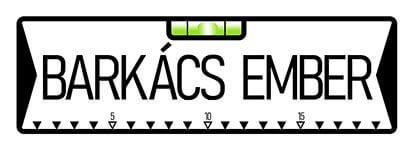The Terms and Conditions provide guidance on any issues that may arise between the user of the service (hereinafter: the Customer) and the person providing the service (hereinafter: the Service Provider). I recommend all Customers to read the chapter before using the service. By recognizing potential risks, the parties can work together to rule out a significant portion of the risks.
Interventions to eliminate the integrity of wall surfaces and coverings
- During DIY, it may be necessary to dismantle the previous wall structure in order to achieve the desired purpose. If the map of mechanical and electrical fittings placed behind a wall is unknown, they may be damaged during the procedure. During handyman jobs, I try to eliminate this risk with the help of a professional wall scanner, but this is not entirely possible. Despite the application of due care during the intervention, the cost of repairing any mechanical or electrical damage shall be borne by the Customer. The Service Provider makes every effort to mitigate and eliminate the damage as soon as possible.
- When drilling wall tiles and floor tiles, due to a material defect or improper tiling, a tile crack may occur. The Service Provider shall not be liable for such risks
Mechanical risks
The Service Provider shall not be liable for any errors in the following cases:
- Failures due to change of shut-off valves
- Additional cost of siphon repair, material replacement in case of cleaning, seal failure
- Repair failure of repaired connecting pipes after repair,
- Moldy surface after shower tray seal, re-appearance of leak,
- Damage due to inaccurate construction of walls and sockets, eg bathtub, installation difficulties with shower cabin,
- Damage caused by drilling near connection pins
Service Provider Responsibility
- The Service Provider is liable for any defects that have occurred due to the negligent execution of the Service Provider. They do not include:
- Defects due to aging of materials,
- An error occurred during the Service Provider’s intervention due to the improper execution of the previous contractor,
- Indirect damage resulting from a material defect of Newly Installed Equipment of any kind,
- Defects due to material defects in newly installed devices and their consequences,
- In the event of liability, compensation always applies only to the rectification of the defect. I do not take systemic responsibility.
- The Service Provider shall not bear the additional costs incurred by the Customer due to the change of the Service Provider’s departure date,
- Fees paid to another contractor may not be charged to the Service Provider for any reason.
Relationship between the Service Provider and the Customer
- Relationship is based on mutual respect,
- The communication between the parties must be concise,
- The Service Provider only executes a clearly defined order,
- The order is issued by verbal communication
- The Customer is responsible for the clear and unambiguous transmission of the order to the Service Provider,
- In case of incorrect execution due to a communication misunderstanding, the Customer shall be liable,
- The parties may also agree on written communication
Machines, tools, methods
The Service Provider carries out the handyman activity with its own equipment. The solution used to perform the work is determined by the Service Provider. In the case of solutions providing the same end result, the Service Provider is obliged to apply the faster and more cost-free solution. However, if more than one method is available to perform the work, the Service Provider will result in a different solution. The Customer is also responsible for the protection of the machines and equipment owned by the Service Provider during the performance of the work.
Work Environment
It is the Customer’s responsibility to ensure that the environment provided to the Service Provider during work complies with safety regulations. If the Service Provider suffers physical or material damage due to the low level of safety in the work environment, the Customer is liable for it. The Service Provider is responsible for the use of the applied machines and methods during the observance of the work protection regulations.
In all other matters, the Parties shall endeavor to reach an amicable settlement. In matters not regulated, the provisions of the Civil Code shall prevail.
